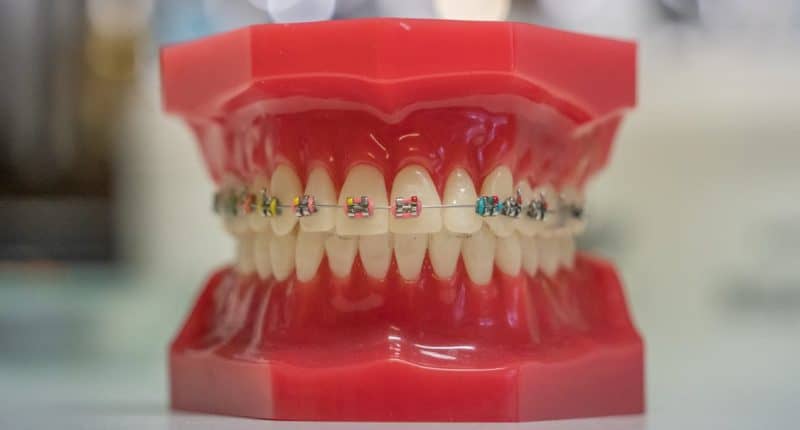Many adults pause at the thought of braces and weigh the pros and cons before taking the plunge into orthodontic care. Teeth move across a lifetime and what once seemed harmless can lead to uneven wear, biting strain and self conscious feelings that affect everyday life.
Today there are more discreet and flexible treatment choices than there used to be, which lets people fit dental care around jobs, family and social plans.
Who Benefits From Braces As An Adult?
Adults who live with crowded teeth, gaps left by missing teeth, or a bite that does not come together correctly are frequent candidates for orthodontic work and often see gains in comfort and tooth longevity.
When teeth are aligned teeth and gums get cleaner access which reduces plaque traps and the risk of slow destruction at the roots and along the gumline.
Those who grind or clench may find that improved alignment eases jaw strain and cuts down on headaches that seemed unrelated to the mouth in the past.
Even purely cosmetic concerns matter because a smile that someone hides can change how they meet new people and handle business or social events.
Orthodontic Options For Adults
Traditional metal braces still do heavy lifting in complex tooth moves and they have the advantage of constant force that works around the clock while modern bracket designs make them less cumbersome than older models.
Ceramic brackets aim to blend with tooth color so they attract less attention, though they can require gentler forces and more attentive cleaning to avoid staining and extra bulk.
Clear aligners allow removable treatment that many adults like because they can eat normal food and brush freely while keeping the process low profile during important meetings or events.
For specific needs lingual braces sit behind the teeth to hide hardware, and short term fixed approaches can correct minor relapses in a matter of months for those who want quick but reliable improvement.
Health Benefits Beyond Aesthetics

Aligning teeth is not just about looking better; it can make daily cleaning more effective and reduce the pockets where bacteria lodge, which in turn slows the march toward decay and tissue loss around the roots.
A balanced bite spreads chewing forces so enamel does not wear down unevenly and sensitive teeth can stop sending warning signals that interrupt meals and sleep.
If you’re considering options for better alignment and oral health, consulting experienced springfield dentists can help you find a treatment that suits both your lifestyle and goals.
In some cases jaw alignment influences breathing and speech patterns and small shifts can produce surprisingly large improvements in comfort and function over time.
Reducing abnormal strain on muscles and joints can stop a cascade of aches that reach up into the face and neck, turning a steady background ache into a quieter, more manageable state.
Risks And Trade Offs
Orthodontic treatment brings expectable discomfort as teeth move and it asks for a period of adjustment in eating and cleaning habits that can feel demanding while treatment is active.
There is a modest risk of root shortening when teeth move substantially, and careful planning plus measured force helps keep that possibility small and manageable.
If gum issues exist at the start and are not tended to first then moving teeth can aggravate tissue loss, so a dental team that works together on both gums and teeth matters a great deal.
Once active work ends the story is not over because teeth like to return to old positions without retainers and follow up care, which means the retainer phase is part of the commitment rather than an optional extra for many people.
Cost And Time Commitments
Financial outlay varies widely, stretching from moderate sums to significant investments that reflect the complexity of the case and the length of treatment, and many practices offer staged payment plans that fit a monthly budget.
Insurance sometimes covers a share of the cost, but coverage for adult orthodontics is not universal so checking benefits early is a smart move to avoid surprises in the middle of care.
Treatment length ranges from a few months for minor relapse fixes up to two years or more when bite and jaw relationships need comprehensive work, and adults often juggle appointments around work and family life as part of the process.
Regular visits for adjustments, occasional repairs and periodic monitoring become part of normal life during treatment and most people adapt to the schedule once they see steady progress.
How Experts Decide Treatment Needs
An initial evaluation combines clinical inspection with study models, photographs and X rays so the orthodontist can map tooth position, jaw relationships and skeletal patterns that influence long term stability.
The health of gums, existing restorations and any missing teeth are all checked and factored into a treatment plan because moving a tooth into an unstable environment can create new problems instead of solving old ones.
Treatment planning frequently involves a team approach with the general dentist and a gum specialist and sometimes oral surgeons or prosthodontists for complex rehabilitation, which helps align goals across disciplines.
Patient goals are an essential part of the picture too; some people want small, discreet tweaks while others seek a more dramatic change, and matching options to life stage and medical background is central to a sensible plan.
Maintaining Results After Treatment
Retention is the stage where the work pays off or slips away and failing to wear retainers often leads to slow drifting back toward the original position that prompted treatment in the first place.
Options include removable nightly retainers, clear overlay retainers and fixed bonded wires behind teeth, and the right choice depends on the movements made and the patient’s willingness to wear a device long term.
Regular hygiene, scheduled cleanings and periodic check ups let clinicians spot early signs of relapse or gum changes so small corrections can be made before a large problem returns.
Think of braces as an investment in mouth health that requires some steady attention after the active phase so the gains become durable and the new smile keeps pace with life demands.








